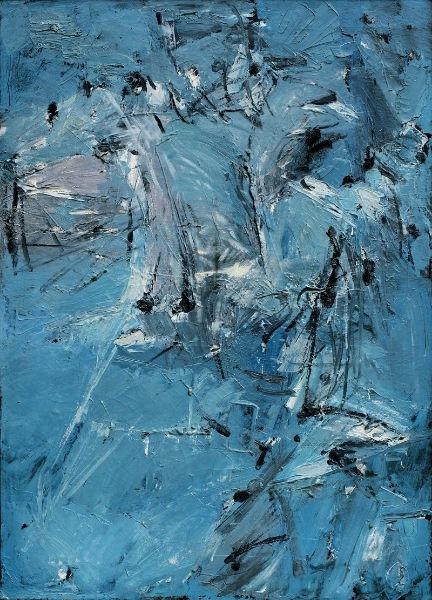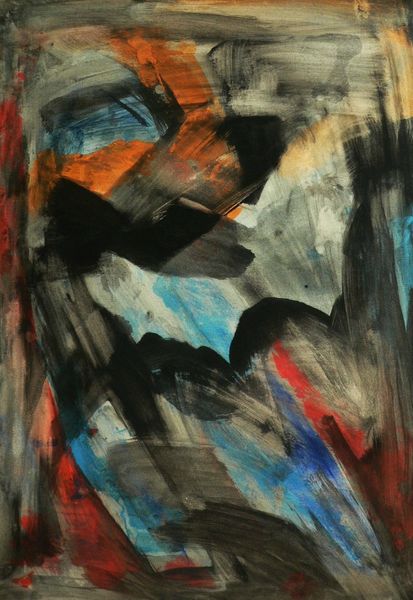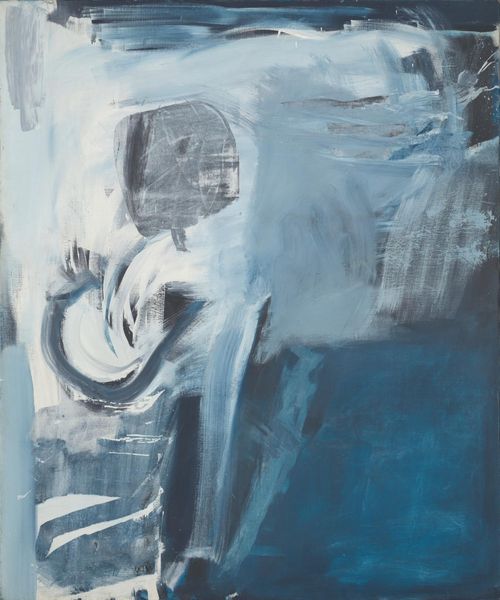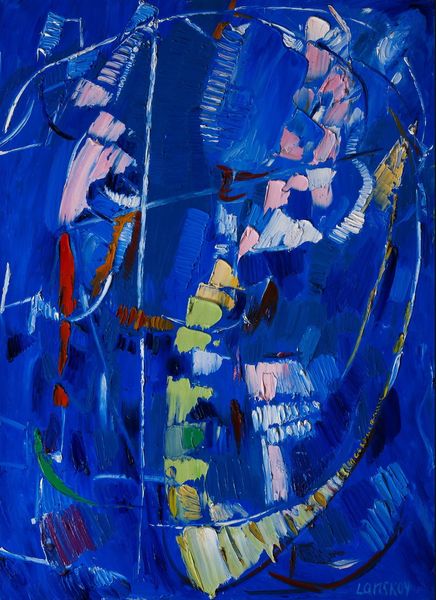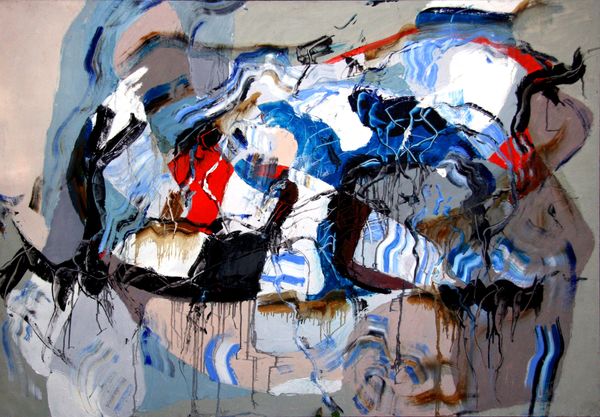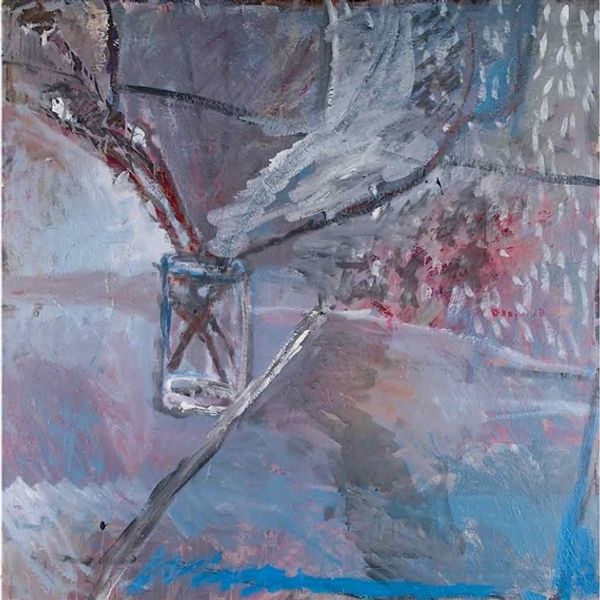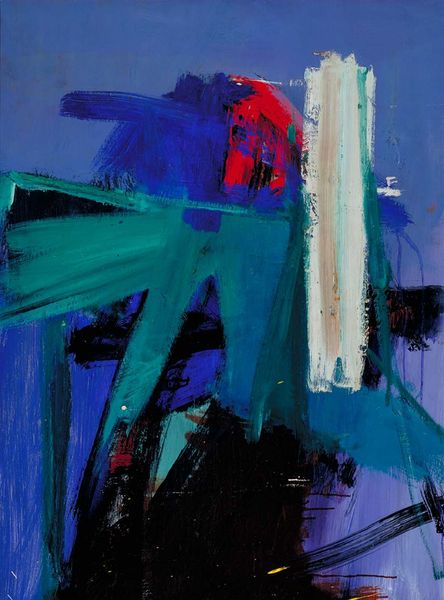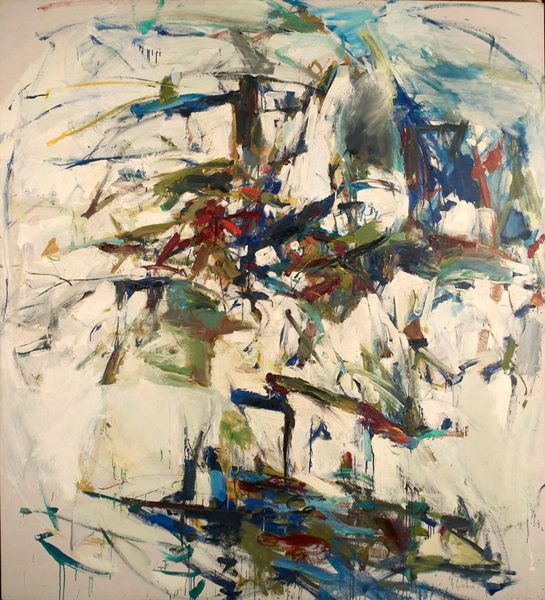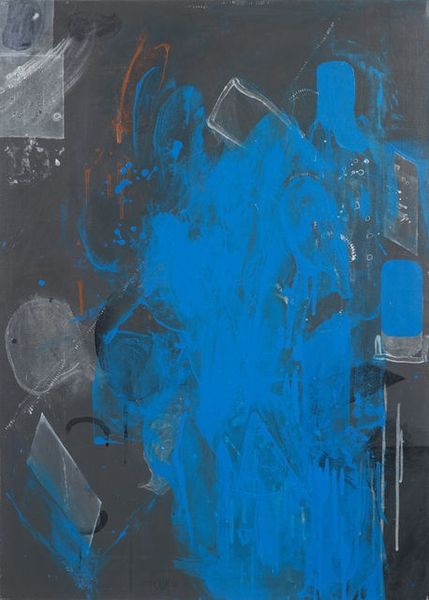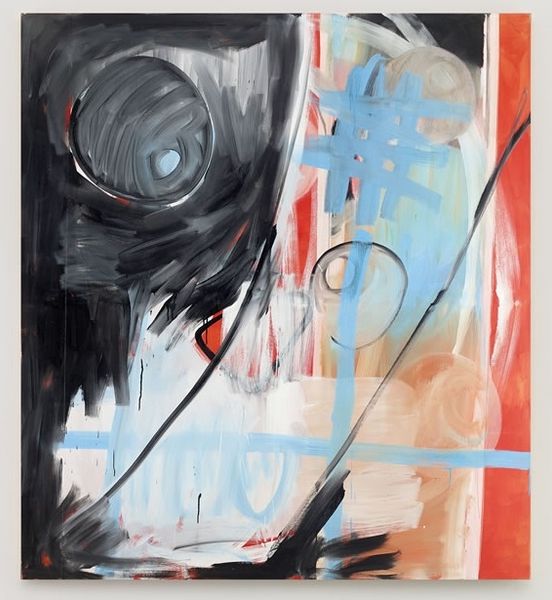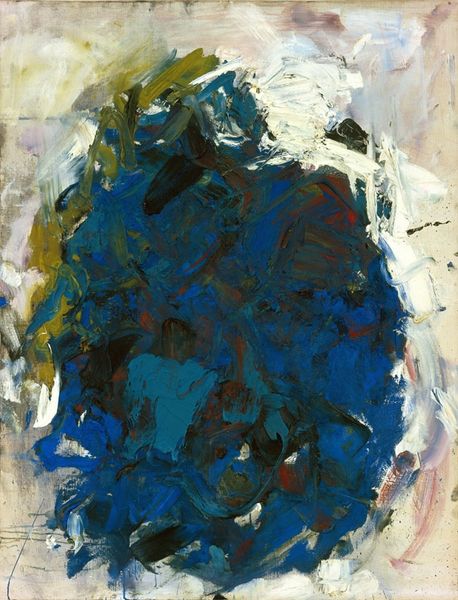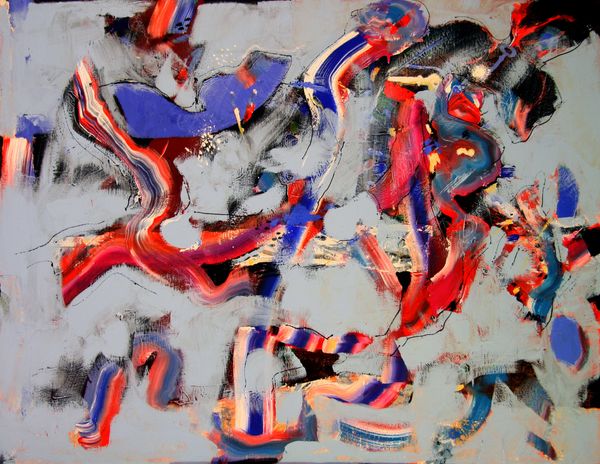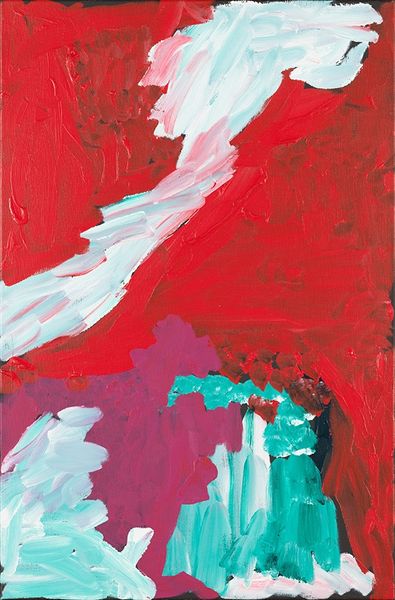
Dimensions: support: 1832 x 1527 mm frame: 1877 x 1571 x 65 mm
Copyright: © The estate of Peter Lanyon | CC-BY-NC-ND 4.0 DEED, Photo: Tate
Curator: Peter Lanyon’s "Lost Mine," resides here at Tate St Ives. He’s a Cornish artist, born in 1918. I always find myself drawn to the way the light seems to move. Editor: It's all watery blues and frantic brushstrokes. I'm immediately struck by the weight of the paint itself, and how that materiality echoes the physical labour of mining. Curator: Lanyon was an avid glider, so I think he's trying to capture that feeling, too – soaring above the landscape. It’s more of a feeling than a place, perhaps. Editor: But the place is key. The mining industry shaped Cornwall. Lanyon’s use of materials connects that industry to the artmaking process; both rely on extracting resources, right? Curator: Right. It’s a visual poem, really – a meditation on place, memory, and movement. It’s both exhilarating and melancholic. Editor: Yes, and those heavy impasto strokes – they’re not just about the view, but about the sheer, demanding work of shaping the land and the art. Curator: It’s a reminder that beauty and industry are always intertwined, isn’t it? Editor: Precisely. It's a conversation between the artist, the land, and the work itself.
Comments
Join the conversation
Join millions of artists and users on Artera today and experience the ultimate creative platform.
tate 8 months ago
⋮
The broad, gestural style of Lost Mine reflects the impact of American Abstract Expressionist painters such as Jackson Pollock, Willem de Kooning and Franz Kline, whose work Lanyon first encountered in the early 1950s. Typically for Lanyon, however, its seeming abstraction is combined with a precise external source: a tin mine in his native Cornwall that had been flooded by the sea and abandoned. The colours are both representational and symbolic. The black stands for the mine shaft and seems to signify death, the blues are the sea and sky, the red signals life and danger. Gallery label, June 2011
